[article by NHT fourder Ken Kantor. orig. from Audio magazine 100 anniv. issue, May 1997]
Please forgive any errors or over sights on the part of your narrator, as I was but nine years old when our story begins. It was 1947, and Dad had been home from the service for just over a year. Although he and Mom had intentions to create the corporeal me, they hadn’t yet managed to do so. Yet even at this relativistically early age, I had an unusual fascination with music and the devices that made it. Since I was unable to sleep or eat at that age, or even physically touch my own body, listening to music occupied a very important and pleasurable part of my time.
Lacking physical substance, I was forced to do all of my critical auditioning while floating around in odd corners of my parents’ New York apartment. My massless state made me supremely sensitive to vibrations of every possible sort, and I came to particularly appreciate the al most erotic waves of energy that would bathe over and through me from my Dad’s loudspeaker. Gradually, interest blossomed into obsession, and I began to see it as my mission to understand and chronicle the evolution of the modern loudspeaker. Here are some of my observations from the last 50 years.
In retrospect, it’s almost funny how huge and ungainly loudspeakers were in 1947. They were veritable dinosaurs: Bafflodocus, Three-way-o-saurus Rex, Folded Hornociraptor. Primitively engineered, yet capable of metabolizing meager watts of food into earthshaking power. In hindsight, they were mostly pretty mean-sounding, though I did not think so at the time. I was just glad to be able to hear the lovely crescendos with only 4 watts of amp, which is all my Dad could afford—and he wasn’t skimping. Much. After all, a new kind of record was just coming out, and the folks were buying as much new music as they could afford.
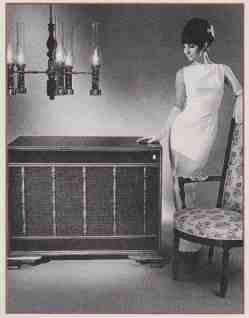
ABOVE - Big speaker cabinets were once the way to go.

ABOVE In the ‘50s, speaker cabinets were often offered with a choice of drivers;
buyers of Stromberg-Carlson’s RH-414 slot-loaded Acoustic Labyrinth had two
such choices.
As the years ticked slowly by, I had plenty of time to notice a subtle change going on around me. Up until I was about four, most of our informal family gatherings centered around the hi-fi speaker. Now, as my birth was nearing, a new device seemed to get more and more attention: the television. It eventually got to the point that Mom suggested, and Dad fully agreed, that the speaker should be moved off to the side of the room to make way for our latest, larger TV set, and the speaker found less and less use. This did not sit well with me. In contrast to the soothing and stimulating vibrations I felt from the hi-fi , I felt nothing from this TV contraption. Of course, in the end, the grotesque speaker fell completely from favor, and the refrigerator- sized space it occupied was reclaimed to hold the crib in which I would soon lie. What bitter irony.
Indeed, the first few years of my life were a dreary time. Not realizing that I had had many years of existence before my birth to learn the intricacies of thought and language (it was speech that eluded me), my parents insisted on trying to communicate with me via monosyllabic drivel. (They spent the rest of their time either at work or watching the infernal TV down in the fallout shelter.) Sure, there were lots of new brands of speakers coming out and many clever ideas for trying to improve their sound. There were folded horns and corner horns and infinite baffles and slot-loaded labyrinths. There were RCA Duo-cones and Altec Lansing Diacones and University Diffusicones. There was the Stephens Co-Spiral, the Electro-Voice Radax, the Jensen Triax, and James B. Lansing and Klipsch and Wharfedale.
Sound quality varied, but the problem was always the same: The speakers were big. Too big for my parents’ apartment and its burgeoning TV console.
Then, in 1958, just before my second birthday—hope! Dad began talking about the need to get a new speaker. In fact, he wanted two, for some special sound effect he kept calling “stereo,” which I did not fully understand. Nor could I understand the family wanting or even tolerating two new behemoths, when even one was too many before. When the speakers did arrive in our home, my heart sank. They were tiny little things, just a fraction of the size of our old Triaxitops. Not even two of these could make any serious noise, I was convinced.
But I was wrong. These AR-3s, as Dad called them, used a technology called acoustic suspension. 1 learned that acoustic suspension first started a few years back, in 1954, and was a way to get deep, powerful bass from a small speaker by using the air inside the box as a spring to assist the woofer. Many people were very skeptical of the idea that really deep bass could come from a tiny box, as I was. Yet by making the air in the small box part of the solution, instead of part of the problem, acoustic suspension set new standards for deep clean bass, for any size box. The days of the dinospeaker were clearly numbered.
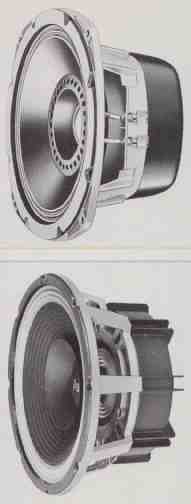
ABOVE Before separately driven tweeters became universal, speaker makers
added stiff attachments to their woofer cones, to boost and extend treble output.
University’s Diffusicone was perforated, while Electro-Voice’s Radax was not.
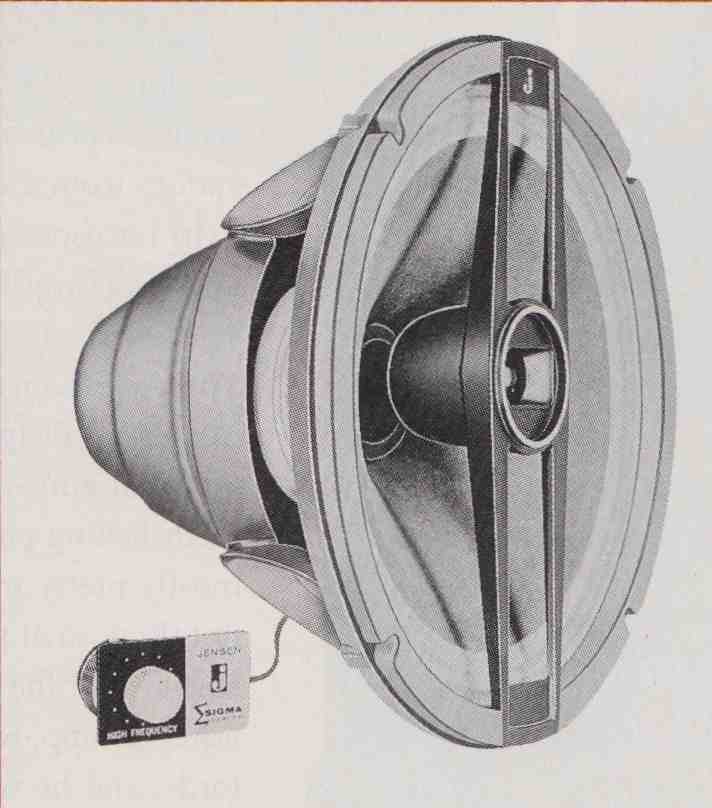
ABOVE - Jensen’s SG-300 12-inch Triax speaker had a coaxially mounted woofer,
midrange, and tweeter.
The AR-3s put that great bass together with a brand-new kind of midrange and tweeter design, called a dome. These little domes seemed such a logical idea, which might ex plain why a couple of different companies fought over bragging rights. Almost anywhere in the room I could crawl, the dome gave a smooth, even sound. Its small size and rounded shape yielded a wide, even radiation pattern, and distortion was kept low since the voice coil pushed the rigid diaphragm very evenly. I had to admit, speakers were finally making progress.
The wildest thing of all was this stereo stuff. As good as the speakers sounded from their (comparatively) tiny boxes, the music seemed to come from the zone between and around them, where no speaker was. It was as if the musicians were ethereal, like I used to be, and were floating around the room invisibly yet seemingly quite real. This was a radical step closer to live music, though at the time I didn’t know what that was. (I guess I wasn’t much different from today’s typical audiophile in that regard.)
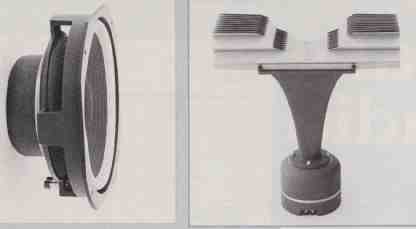
ABOVE James B. Lansing drivers were known for their handsome appearance as
well as their sound.
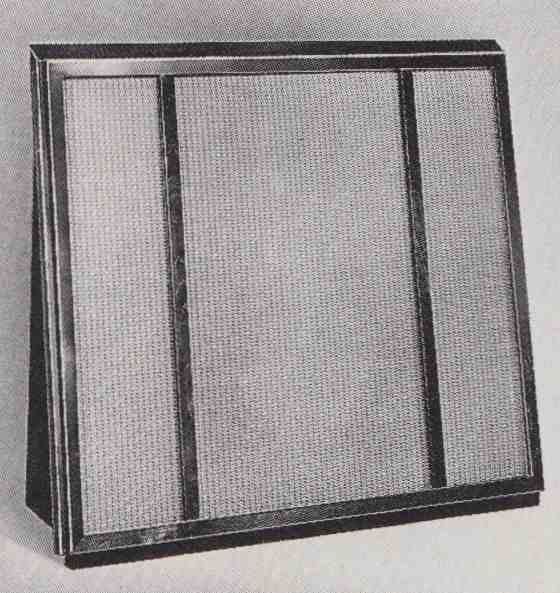
ABOVE The baffle of this Wharfedale three-way speaker had sand-filled walls,
to reduce panel resonance
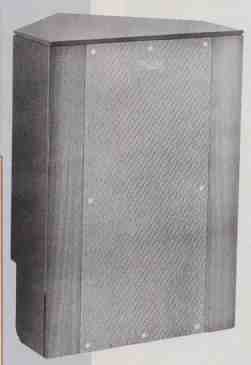
ABOVE Klipsch pioneered the corner horn
By the time the ‘60s came along, things were really rocking. Lots of people were getting into music and finding out what great sound they could get from modest speakers. The commercialization of the transistor gave us the kind of powerful yet affordable amplifiers that small speakers needed to really sing—especially since the songs were getting louder and louder. Four watts seemed like the Stone Age; now we talked 10 times that or more. Even more important, in the early ‘60s engineers were beginning to learn how to test speakers intelligently.
Terms like “pink noise” and “transient response” were entering the audio lexicon.
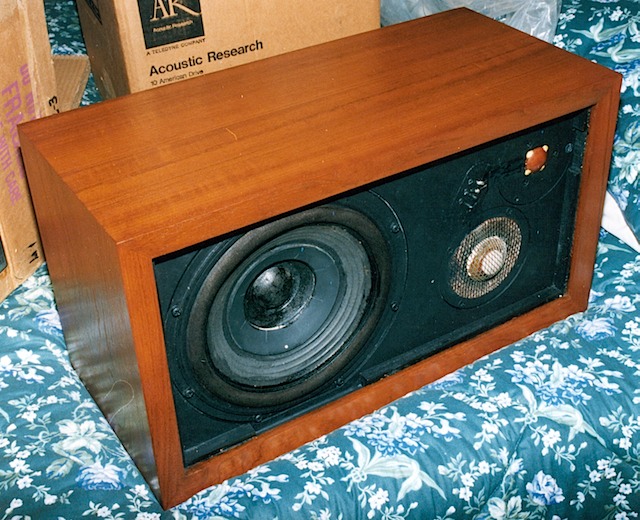
ABOVE The AR-3 and other acoustic-suspension speakers delivered deep, powerful
bass from small boxes.
Small was “in.”
Soon dozens of new brands were jumping into the market, the competition bringing further improvements in sound and visual appeal. Even some pretty old ideas, such as the electrostatic speaker, were being born again, this time with a space-age flair for modern technology and lots of new materials to solve old problems. Hi-fi was such big business that many highly automated factories were built just to make woofers and tweeters, achieving a previously unheard of level of manufacturing precision and consistency. It was indeed a Golden Age.
By now, I was grown up enough to get out and about a bit. For one thing, I finally learned what live music was all about. And, after losing the Mr. Nude Preteen contest at Woodstock, I realized why so many people preferred their stereos.
While I was busy wrestling with my hormones, older and more disciplined people were wrestling with the science of loudspeakers. Although we had landed a man on the moon, nobody on earth knew how speakers really, really worked. Sure, we could test them after we built them. And we could describe the basic physics of their operation. But there was no simple and reliable way to design a speaker from the ground up with any assurance it would sound good. Too much was left to trial and error. Which woofer should go in which box? Should we use a vented or a sealed enclosure? How big should the port be? How do we find the right tweeter to match? Guesswork that didn’t sit very well with the science-freak audio-nut crowd. There had to be some logic to the process.
By the early 1970s, brains like Neville Thiele, Richard Small, Don Keele, Dick Heyser, Roy Allison, and others had consolidated the earlier mathematical and practical acoustics of Leo Beranek, Harry Olson, James Novak, Paul Klipsch, et al., to develop simpler methods of loudspeaker design. (Me, I hadn’t even scored yet.) But “simpler” is in the eye of the beholder, and even these new methods were tedious to do by hand. It wasn’t until the late ‘70s and early ‘80s that things really exploded. (And I’m not talking about my sex life anymore. I worked that out.)
With the introduction of powerful, low-cost computing, the Golden Age went Platinum. The combination of computing power and acoustical “new math” meant that speakers could be designed on paper before any trees had to die to make cabinets. “Computer modeling,” engineers like to call it. It saves time. It saves money. It saves trees. Perhaps most important, it encourages a kind of playfulness that can yield innovative technologies. Would we have the bandpass subwoofer without computers? No. Would we have sixth-order time-coherent crossovers without the computer? Noooo. (Hmmm, maybe I better think more about the implications of this whole computer thing.)
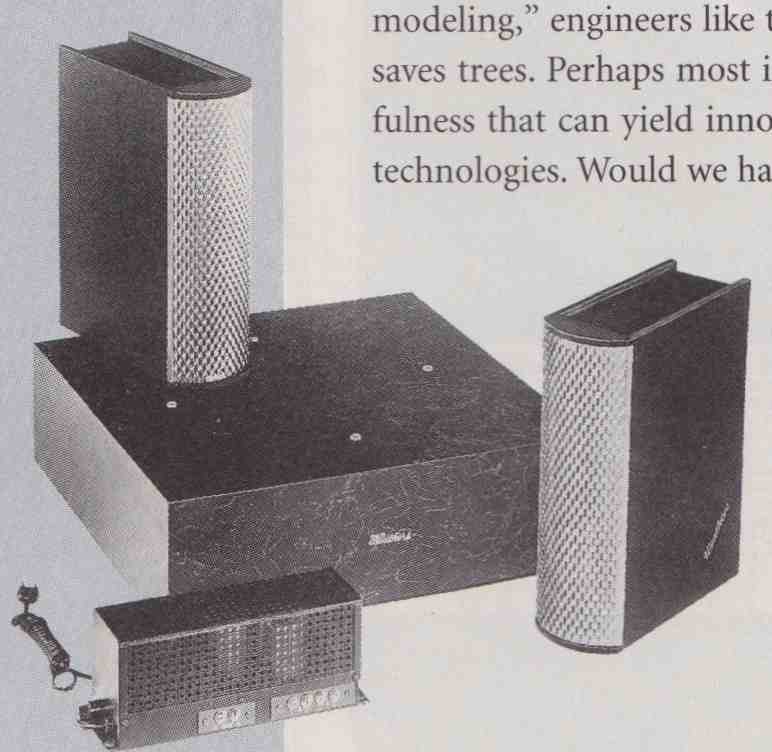
ABOVE When small was in, Weathers produced this early satellite/subwoofer
system whose satellites could masquerade as books on your shelf.

ABOVE JBL’s Paragon used one enclosure for stereo’s two channels, not that
it saved much space.
Well, anyway, armed with microphones, computers can test loudspeakers in whole new ways, dissecting the sound moment by moment and finding details and errors that couldn’t possibly be seen before. This, in itself, helped designers refine speaker sound to a much greater degree than in the past. Armed with a laser, a computer can tell you how and where a woofer cone is breaking up or precisely how a tweeter is resonating, so the basic parts that speaker de signers had to work with got better, too.

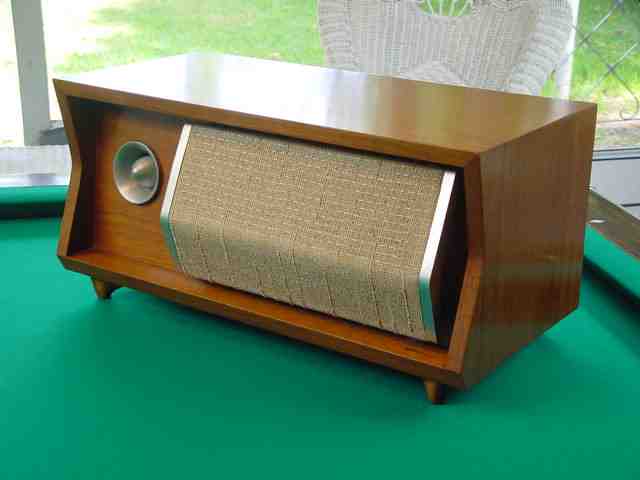
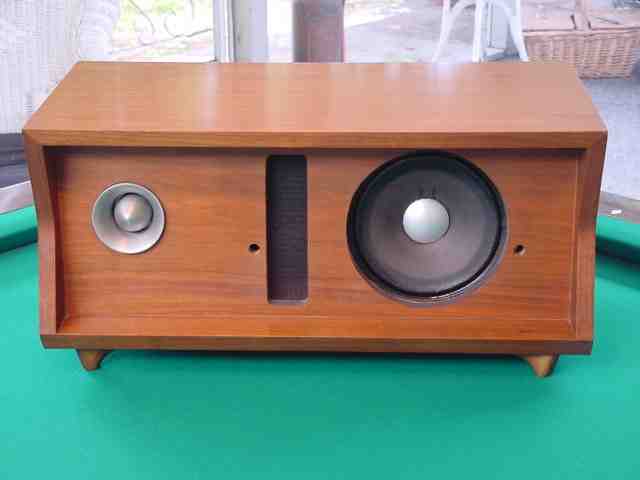
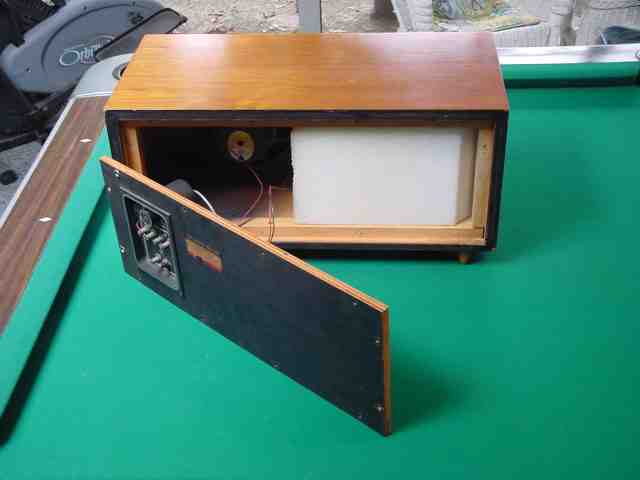
ABOVE: In the ‘50s, dreams of smaller speakers led to this James B. Lansing
Bel-Aire.
All of which pretty well brings us up to the ‘90s and my present, quite corporeal state. A decade in which TVs and speakers finally learned to just get along. Fifty years of trial and error, of science and technology have taught us a lot and left us with some very memorable (if never quite perfect) loudspeakers. But it has also left us with a nagging question: If we can do any I thing we want, what do we want to do?
The answer is not obvious. Not obvious at all. Think about it: A speaker has to do more than reproduce a simple signal. It has to answer to the human brain. It has to play a critical part in creating an illusion of musical reality. As just one example, when a microphone picks up a sound, it combines what it hears from all directions into one signal. All an amp or CD player has to do is pass along that signal as purely as possible. But a speaker has to rebuild a roomful of sound and direction. It has to undo what the microphone did, and it has to do it in a completely different room.
It may seem an impossible task, but it is not. Just as stereo boosted the realism of hi-fi , so will new multichannel media—once we learn how to use them well. Much of the burden, however, still remains with the loudspeaker. What is the “proper” radiation pattern, if there is one? How do we adapt a speaker to different rooms or even different recording techniques? What measurements correlate best with what we hear? Now that we have gotten the basics of loudspeakers down pat, it’s time to look for the answers to these harder questions about acoustics, recording, and perception. I think this is the path that will lead to true realism in audio reproduction. By now, we certainly ought to have learned that digital jitter or amp THD isn’t the Holy Grail of perfection. It’s kind of scary. But then, we’re not —9 anymore, are we, kids?

ABOVE Not all speakers of the ‘60s were compact, as witness the KLH Model
Nine, a full-range electrostatic.
Adapted from Audio magazine (1947-2000). Classic Audio and Audio Engineering magazine issues are available for free download at the Internet Archive (archive.org, aka The Wayback Machine)